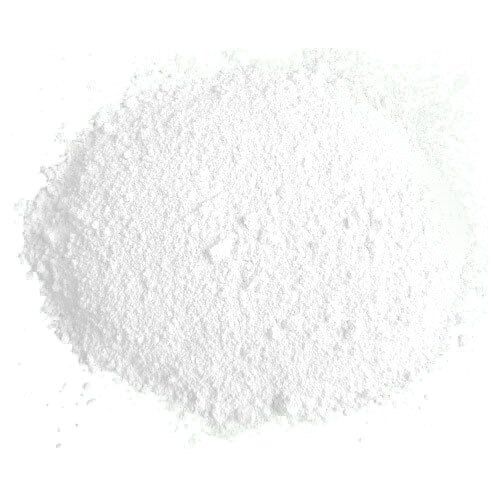Micro China Clay
We are the stalwarts in the domain of manufacturing, supplying, wholesaling, and exporting Micro China Clay. These flavor grade chemicals are processed using pure and accurate ingredients that are procured from reliable and trusted vendors of the market. Our range is available in the market at leading prices in packs of different quantities.
Micro China Clay, also known as nanoclay or clay nanoparticles, can have several applications in statue making, art, model making, and sculptures, adding unique properties and benefits to these creative processes.
Here’s how micro clay can be used in these artistic endeavours:
Statue Making and Sculpture:
Enhancing Texture: Micro clay particles can be added to sculpture materials, such as clay or polymer clay, to enhance the texture and surface details of the sculpture. This can be particularly useful for creating intricate or fine details in figurative sculptures.
Improved Structural Integrity: Micro clay can improve the structural integrity of sculptures by increasing the strength and reducing the risk of cracking during the drying or firing process.
Reduced Shrinkage: By adding micro clay to clay or ceramic materials, artists can reduce the shrinkage that occurs as the sculpture dries or is fired in a kiln, resulting in more accurate and dimensionally stable artworks.
Color and Surface Finish: Micro clay can be used in glazes and surface treatments to achieve unique colors and finishes on sculptures, enhancing their visual appeal.
Art:
Mixed Media Art: Artists can incorporate micro clay into mixed media artworks, adding texture and three-dimensionality to their pieces. This can create a tactile and visually engaging experience for viewers.
Experimental Art: Micro clay can be used in experimental or contemporary art projects to push the boundaries of traditional artistic mediums, allowing artists to create innovative and unconventional artworks.
Model Making:
Enhanced Detail: In model making, especially when creating prototypes or architectural models, micro clay can be added to materials like polymer clay or resin to enhance the level of detail in the models. This is particularly valuable for showcasing intricate architectural features or product designs.
Structural Strength: Micro clay can improve the structural strength of models, ensuring that they are more robust and less prone to damage during handling and presentation.
Surface Finish: Micro clay can be used to create unique surface finishes in models, replicating realistic textures and appearances.
Sculptural Ceramics:
Clay Body Enhancement: Ceramic artists can incorporate micro clay into their clay bodies to enhance the plasticity, workability, and texture of the clay, which can be especially valuable in creating hand-built or wheel-thrown ceramic sculptures.
Glaze Formulation: Micro clay can be used in glaze formulations to achieve specific surface effects and color variations on ceramic sculptures.
It’s important to note that the specific application and benefits of micro clay can vary depending on the type of artwork, the artist’s goals, and the materials and techniques used. Artists and sculptors should experiment with micro clay in their creative processes to discover how it can enhance their artworks and achieve their desired effects.
Here are some uses and applications of micro China clay in different industries:
Polymer Nanocomposites:
Automotive and Aerospace: Micro clay is added to polymer matrices (e.g., epoxy, polypropylene) to enhance mechanical properties, reduce weight, and improve flame resistance in automotive and aerospace components.
Packaging: It is used in packaging materials to improve barrier properties, strength, and durability.
Construction Industry:
Concrete and Cement: Micro clay can be used to improve the strength and durability of concrete structures, making them more resistant to cracking and reducing permeability.
Coatings and Paints:
Corrosion Protection: Micro clay is used in anticorrosive coatings to increase the lifespan of metal structures and prevent rusting.
Barrier Coatings: It improves the barrier properties of coatings, making them more resistant to moisture and gas penetration.
Pharmaceuticals:
Drug Delivery: Micro clay particles can be used as carriers for drug delivery systems, helping to control the release of medications in the body.
Environmental Remediation:
Wastewater Treatment: Micro clay can be employed in wastewater treatment processes to remove heavy metals, organic pollutants, and other contaminants.
Soil Stabilization: It can be used to stabilize soils and prevent erosion in construction and environmental restoration projects.
Oil and Gas Industry:
Drilling Fluids: Micro clay can improve the performance of drilling fluids by increasing viscosity and reducing fluid loss during drilling operations.
Cosmetics:
Personal Care Products: In cosmetics and personal care products, micro clay is used in formulations such as face masks and scrubs for its exfoliating and oil-absorbing properties.
Food Industry:
Food Packaging: It is used in food packaging materials to enhance the barrier properties and extend the shelf life of perishable products.
Electronics:
Dielectric Materials: Micro clay can be incorporated into electronic components to improve their dielectric properties, leading to better insulating materials.
Textiles:
Fabrics: Micro clay can be added to textiles to create fabrics with enhanced fire resistance and improved moisture management.
Agriculture:
Pesticide Formulations: It is used in pesticide formulations to improve the adhesion and persistence of active ingredients on plant surfaces.
Energy Storage:
Batteries and Supercapacitors: Micro clay can be used to enhance the performance of energy storage devices by improving the properties of battery electrodes and supercapacitors.
Micro China clay’s applications continue to expand as researchers discover new ways to harness its unique properties. Its ability to reinforce materials, improve barrier properties, and act as a carrier for various substances makes it a valuable tool across multiple industries.
